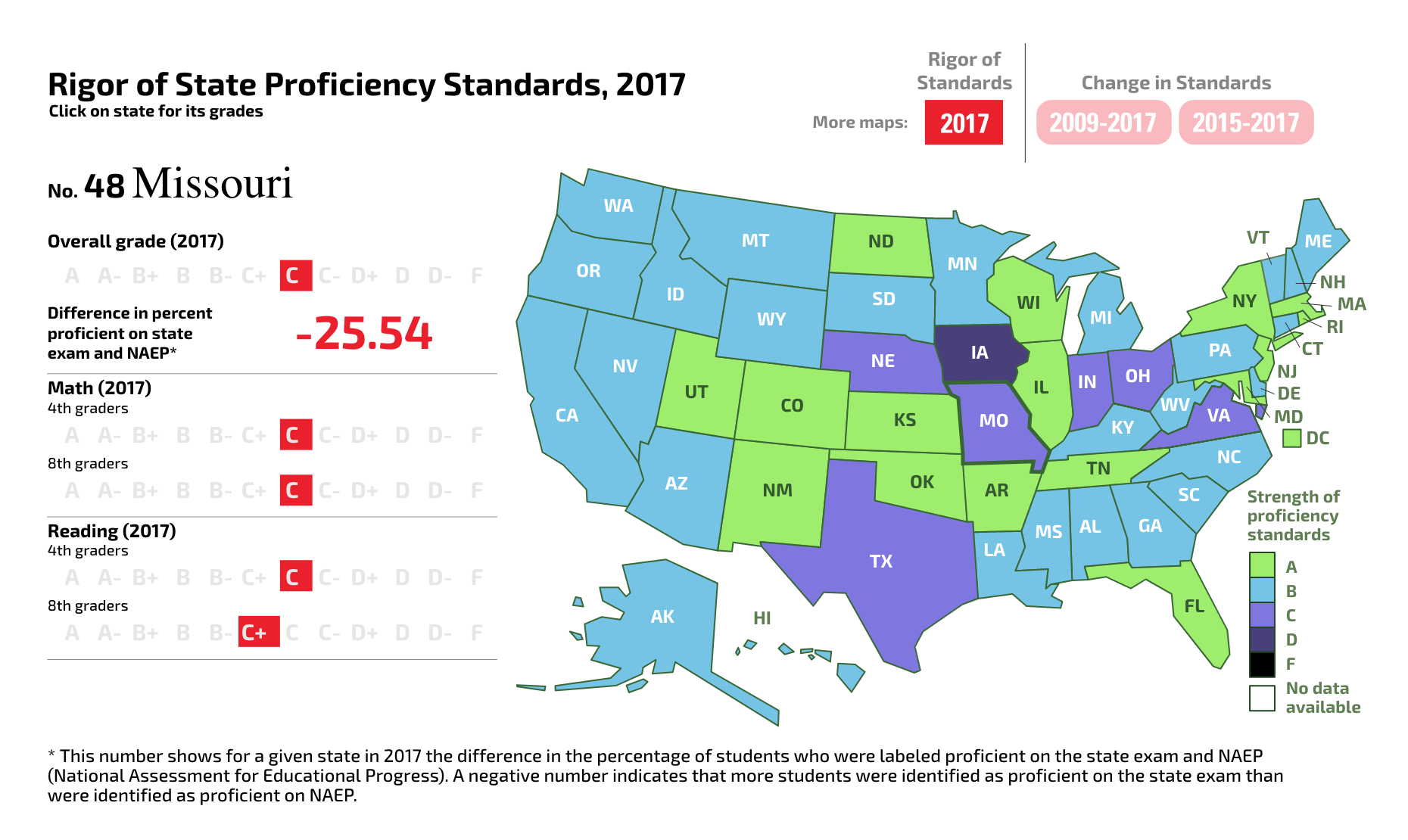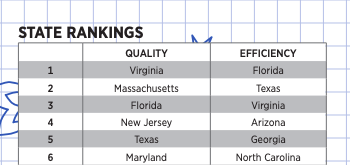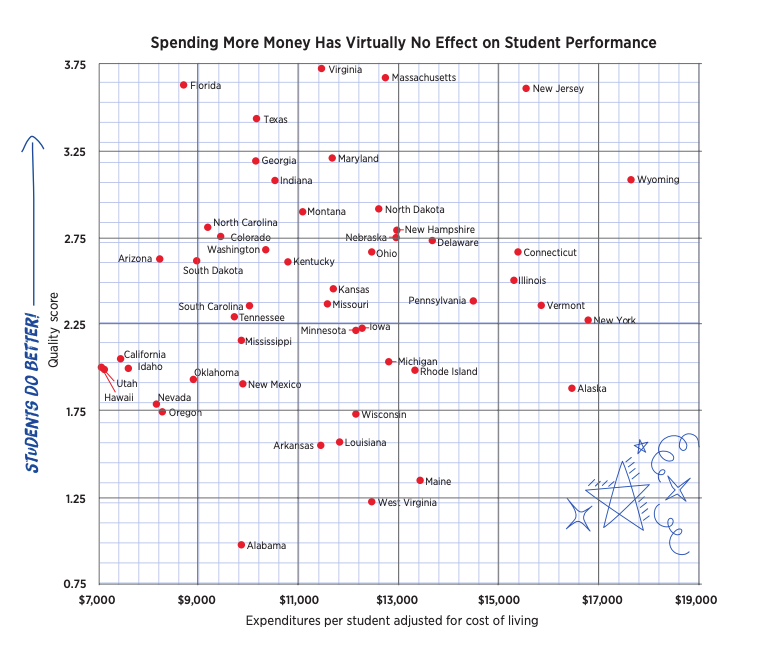Missouri is the only state in the nation to see a growing proficiency gap
The quality of education in Missouri is headed in the wrong direction and has been for a number of years.
We already know that based on Missouri’s own assessments that only two-thirds of our students are proficient in English language arts and only about half of our students are proficient in math.
But a recent study by Education Next shows that Missouri’s education problem is much worse.
They have compared student performance on, “the percentage of students identified as proficient in reading and math on state assessments to the percentage of students so labeled on the more-rigorous NAEP.”
 The National Assessment for Educational Progress (NAEP) is administered by the U.S. Department of Education, considered to have a high bar for math and reading, and provides a common metric for comparing students across the nation.
The National Assessment for Educational Progress (NAEP) is administered by the U.S. Department of Education, considered to have a high bar for math and reading, and provides a common metric for comparing students across the nation.
Education Next’s study shows that a majority of states across the country are making impressive strides to increase the rigor of state assessments and more closely align with NAEP.
But Missouri is going in the opposite direction and is now ranked at #48 out 50 states and the District of Columbia. This is particularly frightening given that Missouri was one of the top two states (the other was Massachusetts) in 2009. Today Missouri is the only state in the nation to see its proficiency gap widen. This means that our state assessment-based proficiency data is growing farther and farther away from what other state’s assessments say about their student proficiency. This makes it harder and harder to adequately compare the quality of education in Missouri to national standards. As Stephen Colbert once quipped, “Eventually, we’ll reach a point when ‘math proficiency’ means, ‘you move when poked with a stick,’ and ‘reading proficiency’ means, ‘your breath will fog a mirror.’”
So what states are doing well?
Florida tops the list as the state with the highest standards. Tennessee has seen the greatest improvement since 2009 followed by Georgia, Illinois, Kansas, and Maryland.
While the process to improve standards is complicated and different in each state, it is worth noting that one thing all of these states have in common is that they all have some form of private school choice program whether it be ESA, voucher, tax-credit scholarship or individual tax credits.
Florida has, in fact, led the nation in expanding school choice, and today 46 percent of their students attend a school of their choice whether it be a charter school, a magnet school, a private school or a traditional public school that better matched their learning style than the school assigned by their zip code.
For Floridians having the ability to choose the school that works for you has become the norm.
The impact that freedom has on student success is clear. Not only does Florida have the highest standards in the county, this year Florida was the only state in the country where students scored higher on the NAEP math exam than two years ago and one of only nine states where students scored higher on the NAEP reading exam than two years ago.
 A new study by Stan Liebowitz and Matthew L. Kelly published in the November 2018 edition of Reason, shows that (when states are compared solely on student performance and disaggregated by age, subject, and racial category to reflect a state’s student heterogeneity and create a level playing field) Florida is ranked as the third best state for a quality education in the country. Even more impressively, Florida is ranked as the most efficient state when comparing student outcomes to the cost of education in the state.
A new study by Stan Liebowitz and Matthew L. Kelly published in the November 2018 edition of Reason, shows that (when states are compared solely on student performance and disaggregated by age, subject, and racial category to reflect a state’s student heterogeneity and create a level playing field) Florida is ranked as the third best state for a quality education in the country. Even more impressively, Florida is ranked as the most efficient state when comparing student outcomes to the cost of education in the state.
For comparison’s sake, Missouri only made it #26 for student performance and #31 for how efficiently we use our education funding. Liebowitz and Kelly argue that, based on their study, expenditures are NOT linked to student performance, using Kansas City as a dramatic example:
 Maybe as Missouri legislators start thinking about how to address our state’s growing proficiency gap and how to create a K-12 system that truly prepares students for the workforce of tomorrow they should take a cue from Florida and work towards creating a system that provides more freedom to parents and students, produces better educational outcomes and actually saves money.
Maybe as Missouri legislators start thinking about how to address our state’s growing proficiency gap and how to create a K-12 system that truly prepares students for the workforce of tomorrow they should take a cue from Florida and work towards creating a system that provides more freedom to parents and students, produces better educational outcomes and actually saves money.
« Previous Post: CEAM bringing ed reform champion Mitch Daniels to MO
» Next Post: Good luck to Vandeven as Commissioner of Education!